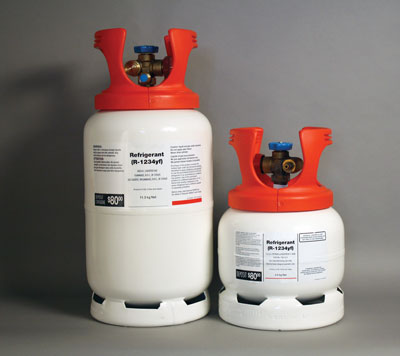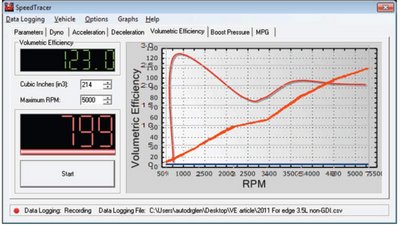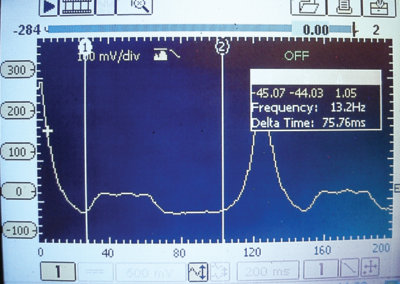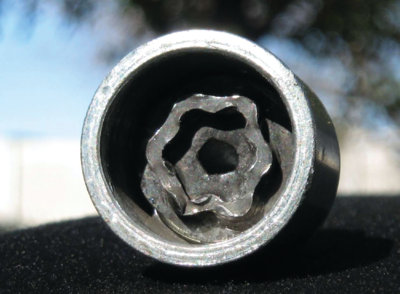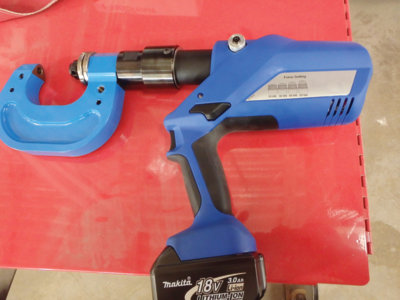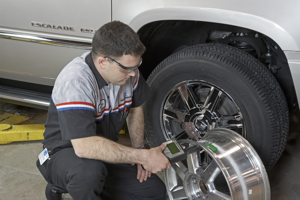 Since the introduction of hydraulic braking systems, whether or when to change brake fluid has been a question with no ready answer. Until Phoenix Systems developed a litmus-paper style test strip for brake fluid, no way to reliably monitor brake fluid – in order to determine when it should be replaced – had ever been clearly identified.
Since the introduction of hydraulic braking systems, whether or when to change brake fluid has been a question with no ready answer. Until Phoenix Systems developed a litmus-paper style test strip for brake fluid, no way to reliably monitor brake fluid – in order to determine when it should be replaced – had ever been clearly identified.
The Motorist Assurance Program (MAP) – a group of leading auto service providers and parts suppliers – has adopted copper as their recommended guideline to automotive service professionals for determining when brake fluid replacement is required. A result of more than five years of FASCAR technology field testing, a National Highway Traffic Safety Administration (NHTSA) commissioned study, and a number of reports published by the Society of Automotive Engineers, this guideline – issued as part of the Motorist Assurance Program Uniform Inspection & Communication Standards (UICS) – recommends that when copper levels in brake fluid reach or exceed 200 parts per million (ppm), the fluid should be considered “worn out,” flushed from the system and replaced.
In September 1998, NHTSA released its report on “Preliminary Investigations into Corrosion in Anti-Lock Braking Systems” (NISTIR 6233), confirming the basis of FASCAR Technology. The study uncovered a condition in anti-lock brake systems resulting from what NIST suggested was the result of anti-corrosion chemicals in brake fluid “wearing out.” The NIST research found significant levels of copper in the fluid of ABS systems experiencing extended braking distance – a result of active corrosion in the system. Used in the manufacture of steel brake line tubing, copper was found in the form of copper ions suspended in the fluid.
Copper in brake fluid, a key predictor of corrosion, is the basis for FASCAR Technology; a revolutionary new color change test strip designed specifically for testing brake fluid. With FASCAR Technology, technicians and vehicle owners have a way to quickly and visually determine when brake fluid should be replaced – as required by MAP-UICS guidelines – in order to control internal brake system corrosion.
Automakers and brake fluid manufacturers have long understood that exposing the various metal parts of a brake system to hydraulic fluid results in internal corrosion occurring over time.
With the development of anti-lock brake systems, what was once considered a non-issue has turned into a real concern. Because fluid circulates through the ABS system when it is activated, corrosion contaminants that develop can quickly spread throughout the entire system; in time building up to levels affecting important metal parts and clogging critical components. Brake fluid makers incorporate anti-corrosion compounds in their formulations to combat this reality.
The challenge faced by vehicle owners is that corrosion inhibitors break down over time and at varying rates, depending on a range of factors. The only truly effective way to determine the condition of anti-corrosion compounds in fluid, at any point in time, is to test it for levels of copper.
The MAP guideline on brake fluid recognizes: 1) periodic replacement of fluid in brake systems as the most effective means of controlling internal corrosion; 2) testing for copper as the most effective means for determining when corrosion inhibitors have become depleted, in turn requiring the brake system be flushed and fluid replaced.
Only two effective means of accurately testing for copper in brake fluid are currently available: 1) laboratory spectrographic analysis and 2) FASCAR technology test strips. FASCAR – short for “Fluid Analysis by Stimulation of Copper Alpha Reactions” – technology is a color change reaction that responds to copper ions in brake fluid. The FASCAR system works on a color scale indicating the amount of copper present in fluid. When a FASCAR strip is exposed to fluid from a brake system, a color change will occur – after about 60 seconds – in the chemical reaction pad on the end of the strip, in proportion to the amount of copper ions suspended in the fluid. When the color change indicates copper levels at or exceeding 200 ppm, as indicated in the FASCAR color scale, the fluid – according to MAP guidelines – should be considered “worn out” and replaced.
Research conducted in the development of FASCAR technology indicates that vehicle owners should closely monitor fluid once it reaches 100 ppm, as corrosion can very quickly accelerate to 200 ppm of copper after reaching 100 ppm. Research to date, on corrosion rates in ABS, suggests that brake fluid should be tested for copper levels after about 20 months in service and thereafter about as often as the vehicle’s recommenced oil change or every 3,000 miles.
FASCAR technology was developed by Phoenix Systems of Tucson, AZ, and is available to professional technicians through distributors across the country under the StripDip brand name, as well as through Autogard QMI, BG Chemicals, Wynns, Autozone and others. The FASCAR system provides automotive technicians the quickest, most accurate visual test to determine whether a customer’s brake system should be flushed and its fluid replaced. A new two strip FASCAR brake fluid test kit is expected to become available to consumers in coming months through auto parts retailers across the country.
For more information on FASCAR technology visit: www.stripdip.com.


